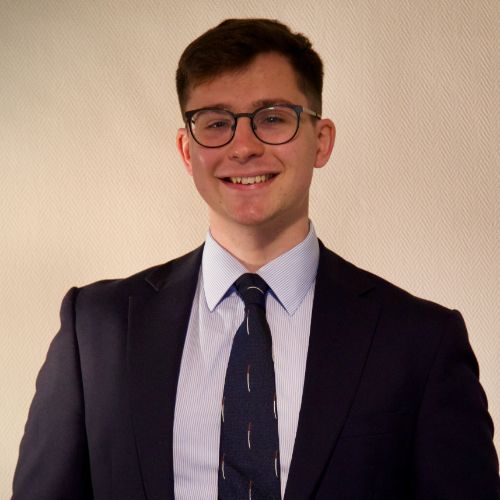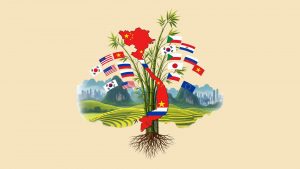Today would be the 100th birthday of Lee Kuan Yew, (1923-2015), the founding father of modern Singapore, and one of the most consequential – and controversial – figures of the twentieth century. Better known now as LKY, he was born as plain old Harry Lee, to a middle-class Chinese family in the British Straits Settlements. Like so many of his generation, as a young man he was caught up in the tides of history. Unlike most of us, he would go on to shape them. His life is full of valuable lessons for modern Britain.
An outstanding student, not just top of his class but ranked first among all students in Malaya, Lee was due to study law in London, but his plans were derailed by the outbreak of the Second World War. Instead, in 1940 he went to Raffles College, the precursor of today’s National University of Singapore. Here, he found a rival for best student: his future wife, Kwa Geok Choo. But his studies were not to last.
In December 1941, Japanese forces surged across Asia in one of the boldest military operations ever undertaken. In a matter of weeks, they knocked out most of the US Pacific Fleet at Pearl Harbour, seized Hong Kong, pushed the Dutch out of Indonesia, the Americans out of the Philippines, and rolled British forces back into India. Landing in northern Malaya, they marched on Singapore, driving 100,000 British, Australian and Indian troops before them, and laid siege to the island city. Back in London, Winston Churchill declared that Singapore must be made a fortress that could never fall. The reputation of the British Empire was on the line.
Yet the city could not be saved. On 31st January 1942, as the reality of the encirclement became clear, the British blew up the causeway linking Singapore to the mainland in a desperate attempt to stop the Japanese. Walking with friends, a young Lee heard the massive explosion. He later claimed that, at that moment, he realised that the British, whom he had admired up to that point, would forever after be a spent force in Asia. By 8th February, the Japanese had established a beachhead; on the 15th the British unconditionally surrendered. That evening, the banner of the Rising Sun flew over Singapore.
It was not long before the Japanese showed their hand. Three days after the surrender, the Kempetai, Japan’s fearsome secret police, oversaw a general massacre of Singapore’s Chinese community. Orders from Tokyo said to kill 50,000; in the event, anywhere between 70,000 and 100,000 people were killed in three weeks. Lee, as a law student and therefore a potential troublemaker, was identified for execution, and brought to an infamous ‘processing centre’. There, he boldly talked his way past the guards, saying that he needed to collect a friend’s belongings. Sensibly, he ran. Those who had been with him were taken to the beach and machine-gunned.
In a remarkable turn of events, he then convinced the Japanese to give him a job, after learning their language. As well as dabbling in the black market, he spent the rest of the war as an English-language specialist for the Japanese propaganda department, until it was clear that the tides had shifted against them, whereupon Lee began planning for the post-war world. Even though only a student, he already had a clear vision of a free Asia – with Singapore out in front. In September 1945, the Japanese surrendered, but the British were slow to reach Singapore. For a few weeks, the city’s status was unclear, and gangs roamed about, looting and killing, until order was restored. The experience of this brief period of anarchy was central in forming LKY’s later political philosophy.
In September 1946, on his twenty-third birthday, Lee sailed for England to finally take up his legal studies. Initially a student at the LSE, he soon found that he preferred Cambridge, and finished his degree there. During his studies, he secretly married his sweetheart Kwa during a visit to Stratford-upon-Avon. Finally, he was called to the bar in 1950, aged 27, and returned to Singapore to start his legal practice.
The city, though returned to British rule, was in a state of flux. Imperial prestige could not recover from the humiliations of 1941-45, and discontent was bubbling. A Communist insurgency in Malaya, concentrated among the Chinese community, meant that British authorities looked suspiciously at the majority Chinese city. Lee began to become more and more involved in anti-colonial politics, representing trade unionists pro bono, and establishing his credentials as an opponent of British rule and a man of the people. During this time, he finally dropped his English name, and became Lee Kuan Yew: soon after, this was frequently being shortened to LKY. In 1954, with his associates, he founded the People’s Action Party (PAP), dedicated to freeing Singapore and Malaya and establishing a new, independent, multiethnic country.
In the second half of the 1950s, even as British forces cornered the Communist rebels in Malaya, the case for empire was becoming harder and harder to make. Decolonisation came to seem inevitable, and talks were arranged. Eventually, it was agreed that Singapore would become self-governing, but that the British would retain control over defence and foreign affairs. In 1959, LKY became the first Prime Minister of Singapore, as an integral part of the Commonwealth.
The twists and turns of the next few years are complex, to say the least. Rather than remain a self-governing part of the British Empire, in 1963 Singapore was instead absorbed, by popular mandate, into the new state of Malaysia. With Lee remaining in charge of the city, he soon found himself as a rival to the Malaysian premier, Tunku Abdul Rahman. Abdul Rahman was a great believer in Malaysia for the Malays, and clashed frequently with the Singaporeans, most of whom were ethnically Chinese. Having the city as part of Malaysia meant that the new country was nearly 40% Chinese; when the Tamil community was added this meant that the Malays were a minority in their own land. Tension became unbearable, and UNMO, the ruling party, moved to expel Singapore from Malaysia. Despite Lee making an eloquent speech to the Malaysian Parliament entirely in Malay, stating the case for integration and peaceful co-operation, the city-state was cast out on 9th August 1965.
Few had any hope for the former colony. A tiny entrepôt, it had no industrial base, little farmland, no military, and no clear plan for the future. It didn’t even have a reliable source of water: supplies were piped in from Johor Bahru, across the causeway. The city was haunted by a small but powerful network of Communist agitators. Furthermore, it was stuck between Malaysia and Indonesia, two much larger, mutually hostile states. The world looked on nervously. Would the city collapse? Would Malaysia invade? Would Britain have to take back control? Would the UN step in and make Singapore an international protectorate?
Lee was nowhere to be seen. For six weeks, he retreated to an isolated bungalow, surrounded by his advisors. Phone calls went unanswered; enquiries from the British High Commissioner were politely rebuffed. Those watching could only wonder what he was up to. Usually unflappable, Lee later recalled this period as particularly stressful. He hardly slept. Those six weeks, it turned out, were vital; Lee and his advisors were figuring out how to build a state from scratch.
Over the next ten years, Lee oversaw a flurry of activity that laid the groundwork for enormous success. He secured international recognition for the city, and had Singapore join the UN. He reached out to and made peace with Indonesia, Malaysia’s bitter rival, establishing Singapore’s policy of neutrality. He became friendly with the US, but opened relations with China as well. Not trusting British promises to keep a garrison in the city, he secretly hired the Israeli Defence Forces to train Singapore’s nascent military. Introducing conscription for all male citizens, he quickly built up a small but highly competent force. Universal service helped enormously in forging national identity and establishing ethnic harmony. English was made an official language, so as not to favour any of Singapore’s different ethnic groups, and to encourage international trade and investment. At the same time, bilingual schooling was introduced for each of Singapore’s communities, so they might remain in touch with their heritage even as they spoke English to each other. To insulate Singapore from the dangers of relying on Malaysia for its water supply, experiments with recycling began in the 1970s. This was successful: today, most of Singapore’s water is recycled, and supplemented with rainwater storage.
But the city’s two greatest triumphs were in housing and the economy. Singapore, like many port cities, had long been characterised by high unemployment and insecure accommodation. LKY’s policies changed this, by introducing reforms to make Singapore globally competitive. He set the country a goal: to be a First World city in the middle of the Third World. As well as the insistence on English, LKY oversaw the construction of a professionalised, efficient, low-tax regime. The PAP placed great emphasis on anti-corruption drives and strict internal oversight policies, establishing a reputation for fair dealing and competence. To reassure investors, and stabilise the Singaporean dollar, the PAP introduced goals for annual budget surpluses, which it quickly began to meet. Red tape was slashed, and Singapore became one of the easiest places to set up a company. Foreign investment surged.
In the 1970s, high-tech manufacturing came to the city, as American and Japanese companies went looking for a cheap but skilled workforce. Singapore became a centre of electronics manufacturing, using the experience to work its way up the value chain, from assembly to programming and innovation. Meanwhile, a sound industrial policy meant that key industries remained nationalised, including steel and water. Singapore Airlines was founded with the express aim of becoming the world’s best airline – which it duly did. In the process, Singapore became a hub for air travel as well as a thriving port for transshipment, making the best of its strategic location.
Likewise, the housing policies of the PAP were remarkable. LKY, recognising that owning property is the key to a thriving middle class, a source of social stability and an engine for growth, made it a priority. He grasped a truth that many others have struggled with: when people know they can have somewhere to live, and know that it’s theirs, they tend to throw themselves more fully into their work, and everyone benefits. Good housing really is at the heart of everything. Rather than leave it to the free market, the government’s Housing and Development Board (HDB) invested heavily in construction, designing and building comfortable blocks of flats. To prevent the kind of alienation and anomie that so often resulted from comparable projects in the west, each cluster of tower blocks was given good transport links, and its own shops, schools and social and medical facilities – each project a complete town in itself. A degree of intrusive social engineering was permitted, so that each block would have a mixture of different ethnicities and social classes, to prevent the formation of ghettos.
Singapore struck a fine balance in its housing policy: while building on the scale and in the spirit of the Eastern Bloc, it made sure that, even if the government had built the houses, their residents would own them. Indeed, one could argue that the HDB anticipated the housing reforms of Margaret Thatcher by decades, but avoided the latter’s toxic consequences. Today, the majority of Singaporeans live in HDB flats; but nearly 9 in 10 own their own property. Rather than charge swingeing income taxes, the Singaporean government insists on mandatory savings accounts for property-buying, and diverts a portion of everyone’s monthly income along the lines of national insurance. Consequently, Sinagpore now has one of the highest rates of home-ownership in the world. What’s more, its houses are a byword for quality. As population has surged, building has kept pace: Singapore is one of the most densely-populated places on earth. Such is the drive for construction that the physical limits of the island are not considered an obstacle: the plan is simply to make more land as needed.
It was not all smooth sailing, of course. Shortly after independence, the city was riven by race riots after clashes between the Chinese and Malay communities. (One fascinating consequence of these riots is the Singapore Police Force’s continuing reliance on Nepali Gurkhas for public order policing; as outsiders they were perceived as scrupulously neutral). But these riots were a catalyst for policies aimed at achieving and maintaining social harmony. Even if tensions sometimes bubble over, and discrimination undoubtedly exists, Singapore has largely achieved what much of Europe, and especially the US, could only dream of: a peaceful, thriving, multiracial society. With four official languages, and a dedication to meritocracy, there are – at least on paper – few obstacles to advancement.
However, these improvements came at a price. Singapore is a partially authoritarian state, however benevolent. There are limits on free speech and the right to assembly. The severity of its rules are infamous, from the automatic death penalty for drug smuggling to a blanket ban on chewing gum. Graffiti is a caning offence. It is perhaps one of the only places on earth where, technically, you cannot be naked in your own home (make sure those curtains are closed). The government keeps a tight leash on domestic media, and is quick to sue foreign newspapers for libel or defamation. The cultural life of the city is stifled, even sterile. Though it boasts a 98% literacy rate, half of Singaporeans read less than one book a year – and if they do, they overwhelmingly prefer get-rich-quick self-help guides to literary fiction or history. The price of meritocracy was the creation of an ultra-competitive culture. In his quest to create a society based on what he called ‘Asian values’ (though foreign journalists often called them Confucian, they bore closer resemblance to the Chinese Legalist school), LKY also ushered in some of the worst aspects of western modernity.
So, on his centenary, what can we make of him? LKY was a true giant of history, and embodied the spirit of Singapore more than anyone else. Under his guidance, the city became richer, safer, cleaner – but also more repressive. He was ferociously intelligent, iron-willed, and ambitious, and achieved great things – but he was, equally, a control freak and a Machiavellian (though the latter is not necessarily a bad trait in a statesman). He was clear-eyed, and quick to spot and dismantle other’s bluster, but he had a notoriously sharp tongue, and a waspish sense of humour that made enemies as often as it won admirers. LKY’s vision of guided democracy, while undoubtedly rigorous, was thoroughly enlightened. He lived a spartan life, where so many others would have been tempted to make the most of their power and wallow in luxury. Rather than stumble from moral panic to mini-crisis according to the whims of the news cycle, his government looked boldly to the future, and made plans for the long run. He valued what the Chinese might call guo zhi da zhe, ‘the great affairs of the state’: infrastructure, security, housing, economic development, social harmony. If, to achieve these aims, he sometimes had to keep a lid on civil liberties, so be it. He put his city and his people’s interests first, and created a government and civil society defined by meritocracy, transparency and incorruptibility.
In doing so, he transformed Singapore. The city-state consistently tops international polls for ease of doing business. It’s easy to see why: low taxes, a highly-educated, multilingual workforce, a small, fair-minded, but powerful state, and an efficient bureaucracy. Even if western observers snipe about the relative lack of freedoms, there is much to admire in Singapore. 89.3% of its residents are homeowners. Violent crime is almost unknown. The drug trade has been suppressed by an uncompromising approach to the death penalty. Corruption is so low that even minor cases become international news. In a multiethnic society, racial relations remain good. The city is full of greenery, and has a cheap, reliable public transport network. Its universities, led by Lee’s alma mater, are leapfrogging to the top of global rankings. Singapore consistently outperforms its critics on every metric. The people may not, technically, be as free as Europeans or Americans – but they are safer, healthier, and better housed; they live longer, get better grades, earn similar salaries and have similar disposable incomes. Who, then, can really be said to be right?
Just as the emperor Augustus could boast that he had found Rome a city of brick and left it a city of marble, LKY’s long stewardship and watchful eye turned Singapore from a chaotic colonial backwater to a gleaming vision of the 21st century. He deftly balanced the great powers, and always looked out for Singapore first. He was a ruler in the Roman mould, a Chinese Cincinnatus, or perhaps a latter-day Frederick the Great. The world of the 2020s, with our motley collection of mediocrities, despots, populists and dotards, is crying out for someone of LKY’s calibre. Whatever his faults, we can only hope we will see his like again.
- Sean Patersonhttps://asiascot.com/author/sean-paterson
- Sean Patersonhttps://asiascot.com/author/sean-paterson
- Sean Patersonhttps://asiascot.com/author/sean-paterson
- Sean Patersonhttps://asiascot.com/author/sean-paterson







